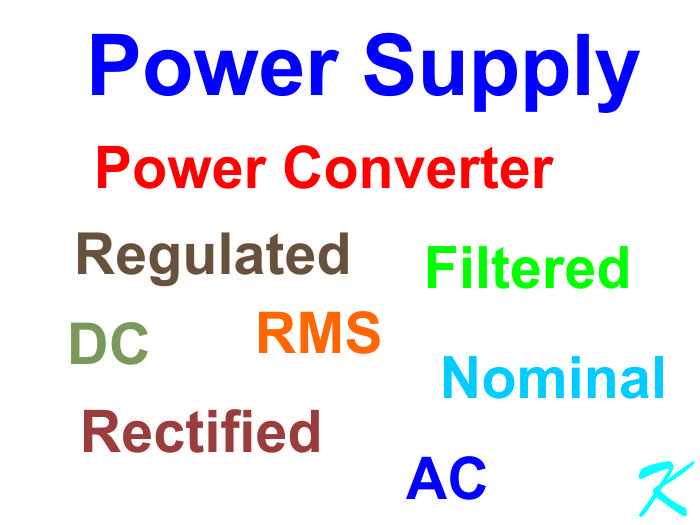Power Converter AC (Alternating Current)
A power supply doesn't supply power; a power supply converts power. This is true of a DC power supply, and this is true of the utility power supplying power to the power supply.
At the utility power generating station, they take the power that has been converted to steam, the power that has come from a dam across a river, the power that comes from wind, and then turn generators, creating the utility power. The power they generate is in the thousands of volts, then converted to higher voltage and finally down to the 120 Volts AC (Alternating Current) or 230 Volts AC we think of as utility power.
Like plug-in power supply or a power supply panel, the utility power company didn't create the power, they just converted it.
Peak-to-Peak Voltage
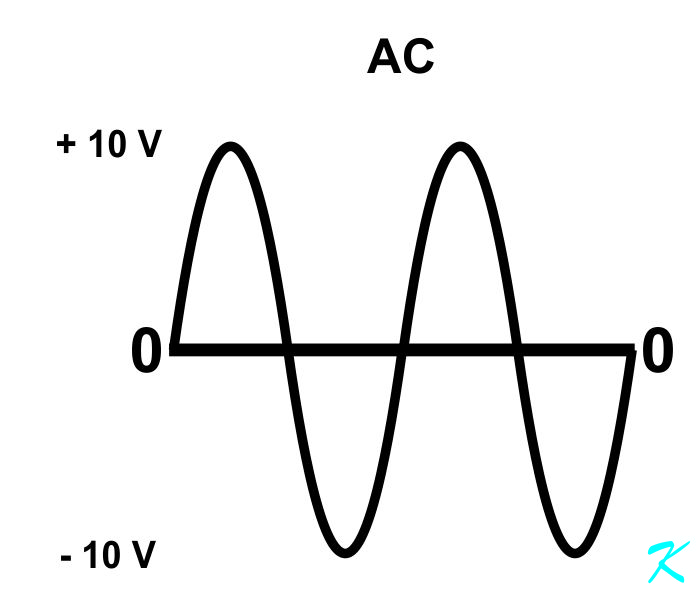
Here, the voltage goes from 10 Volts Positive Peak to 10 Volts Negative Peak, or 20 Volts Peak-to-Peak
AC Equivalent Voltage or RMS Voltage
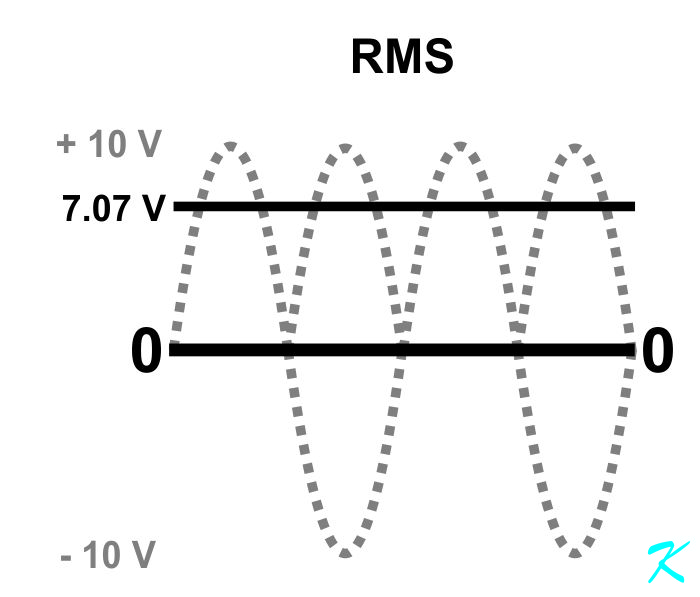
Pictured here is 7.07 V RMS. Whether it's AC Sinusoidal voltage or rectified, pulsating voltage, RMS voltage is 70.7 % of the Peak Sinusoidal voltage.
The reason that it's called AC is that current goes one direction, and then the other direction, and then it goes the first direction again. The current does this double reversal 50 or 60 times a second (50 Hz or 60 Hz).
The 120 Volts AC or 230 Volts AC is not true voltage, the voltage is the heating value of what a steady DC voltage would be; it's the voltage in RMS. RMS or Root-Mean-Square is a mathematical way of measuring the heating value from varying voltage.
In other words, the AC RMS voltage is the equivalent of the DC voltage that would light a light bulb. If you have a battery of 120 volts, the 120 Volts AC RMS would light the light bulb exactly a brightly as 120 Volts DC of the battery; if you have a battery of 230 volts, the 230 Volts AC RMS would light the light bulb exactly a brightly as 230 Volts DC of the battery.
The trouble is that the AC voltage isn't constant. The AC voltage goes gradually from negative to positive and back to negative. (OK, for us humans 50 Hz or 60 HZ is extremely fast, but for a computer, 50 Hz or 60 Hz is very slow motion, so this alternating voltage is slowly changing back and forth.)
The voltage starts out at a negative peak, quite a bit more than the 120 volts or 230 volts, goes up to zero volts, continues until it reaches a positive peak of quite a bit more than 120 volts or 230 volts, and then goes back past zero volts to the negative peak.
It does this 50 or 60 times a second, and the heating value (somewhat similar to averaging the voltage) is the same as a 120 Volt or 230 Volt battery.
Peak Voltage
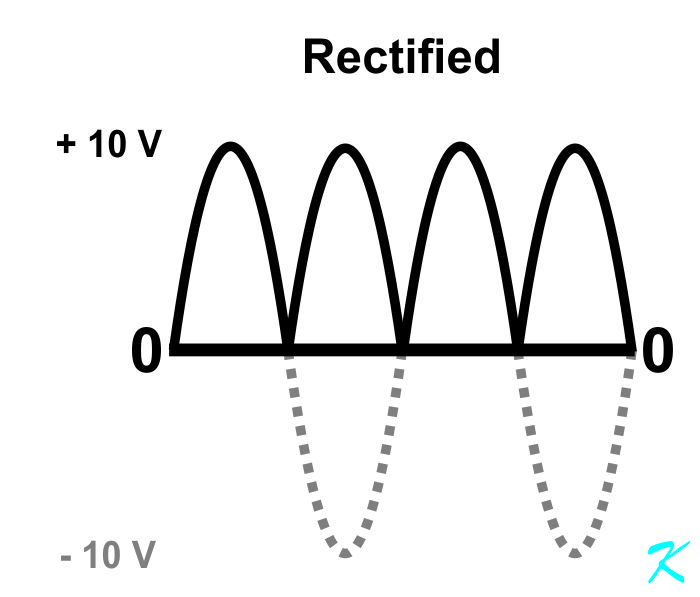
Many times, rectification is performed using diodes, like a full wave bridge rectifier (four diodes arranged inside a small black box).
In this case, the negative peaks on the AC power have been reversed so that along with the normally positive peaks, they are also positive.
Reversing the plus and minus leads on the Full Wave Bridge Rectifier will produce negative peaks rather than positive peaks.
The positive and negative peaks in voltage, like I said, is higher than the RMS voltage. For 120 Volts AC RMS voltage, the positive and negative peaks in voltage is 169 Volts, for 230 Volts AC RMS, the peaks are 325 Volts.
The voltage is at the peak voltages only momentarily; and most the time, the voltage is moving between the peaks, so the instantaneous voltages are usually lower.
To find peak-to-peak voltage, measure the total voltage between the positive peaks and the negative peaks. For 120 Volts AC RMS, the peak-to-peak voltage is 388 Volts, and for 230 Volts AC RMS, the peak-to-peak voltage is 650 Volts.
A Power Supply Converts in Stages
There are three power supply output types: "Rectified", "Filtered", and "Regulated".

Pictured here is AC power (50Hz or 60 Hz) that has been rectified into pulsating DC. The voltage is pulsing at a rate of 100 to 120 times a second.
The rectified voltage is 10 Volts Peak. If it wasn't rectified, the voltage would be 20 Volts Peak-to-Peak.
A DC voltmeter may read 7.07 Volts (RMS Voltage), or the DC voltmeter may read 10 Volts (Peak Voltage). As "Ripple Voltage", an AC meter may read 7.07 volts, 10 volts, or some other voltage. You can't count on exact AC voltage readings, but if the AC meter shows significant voltage, at least you can count on there being significant voltage.
Rectified - This is the cheapest to build power supplies. Using diodes, the transformer-reduced AC voltage is changed from an AC RMS voltage (where the voltage is alternating positive-negative-positive-negative) to a voltage that pulses positive-positive-positive-positive . . . or negative-negative-negative-negative . . .
Basically, if it's a
24 Volt rectified power supply, it's still the 24 Volts RMS that's described earlier, with a peak voltage of about 34 Volts.
Because there's almost nothing else added to it, there's a "Ripple Voltage" of 34 Volts Peak-to-Peak; the voltage is continually changing between zero volts and 34 Volts. If you use a DC Voltmeter on this, most DC Voltmeters will show 24 Volts. If you use an AC Voltmeter on this, the AC Voltmeter will show something like 10 Volts AC to 34 Volts AC, depending on the AC Voltmeter.
As a contrast, an AC Voltmeter will show about Zero volts when measuring the AC Voltage on a battery because there's no ripple voltage.
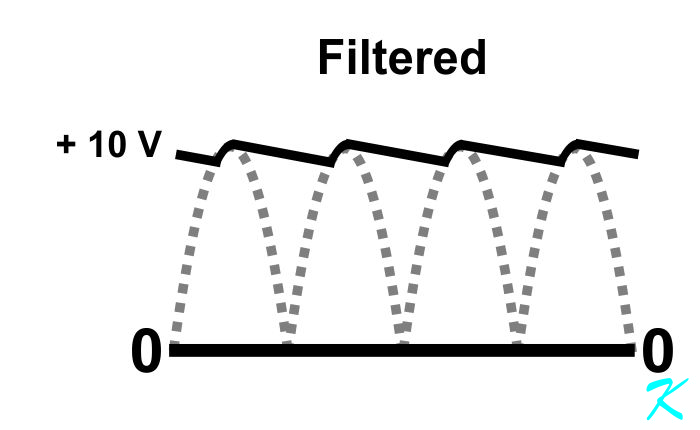
Here, the power at the peak voltage charges up a capacitor, and the capacitor provides a more continuous power. The capacitor is used to filter out most of the ripple from the rectified power.
A DC voltmeter will show close to 10 Volts, an AC voltmeter will show less than 2 volts (ripple voltage).
Filtered - This is a rectified power supply that has added to it capacitors, resistors, and sometimes a few other components that can be used to "Filter Out" some or all of the AC "Ripple Voltage". The actual voltage on the output can go up down like a nominal power supply. This varying can be from changes in the 120 Volts AC or 230 Volts AC input, changes in current use by the equipment being supplied power, or when the power supply is on "Battery Backup".
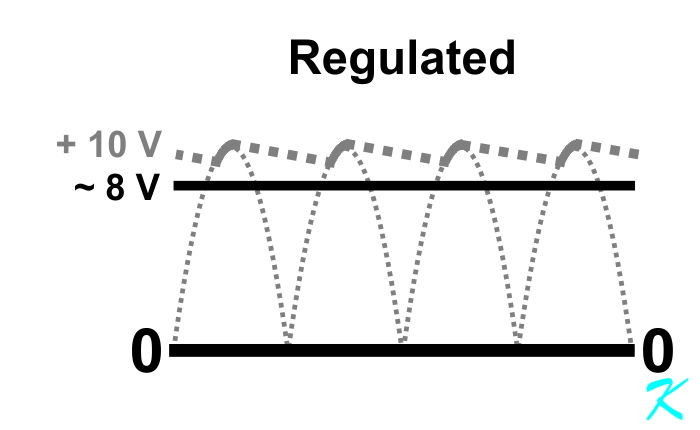
Here, the filtered power is held to a constant voltage. To keep it constant, the regulated voltage is always less than the rectified voltage.
A DC voltmeter will show a constant voltage, here somewhere around 8 Volts (unvarying). An AC voltmeter will show zero volts.
Regulated - This is a rectified and filtered power supply that also has added circuitry to keep the voltage exactly the same, even when utility power voltage and changes, or the load current changes.
Nowadays, some power supplies inside fire alarm systems are using these regulated power supplies. Watch out, though. Some of the regulated power supplies may say "Regulated", but when the supply goes to emergency battery backup power, the power supply might become "Nominal Voltage" because the batteries are nominal voltage.
Battery Voltage - Nominal Voltage
Most power supplies for fire alarm systems are 24 Volt DC power supplies, but that's 24 volts nominal. They use transformers to reduce the 120 Volts AC or 230 Volts AC to what can be used in the rest of the power supply. The actual voltage is usually tied to the battery voltage, which is nominal.
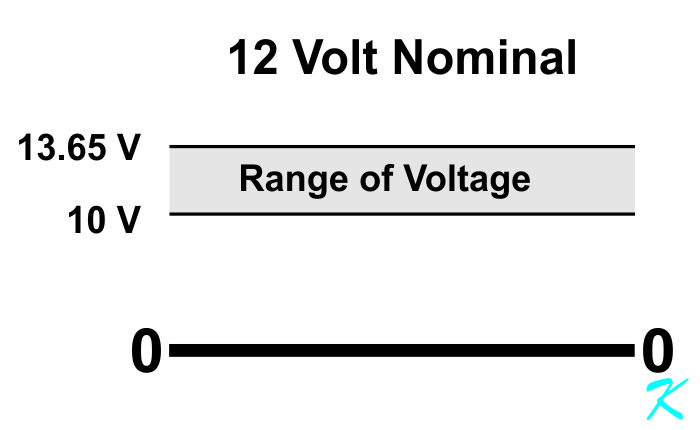
A 12 Volt Nominal power supply is not 12 volts, the 12 volts only refers to the name (Nominal), not to the actual voltage. The same is true of a 24 Volt Nominal power supply commonly used in fire alarm systems. The 24 volts only refers to the name, not to the actual voltage.
The label on batteries has only a little to do with what voltage can be expected from the battery. If the battery is a 24 Volt battery, the voltage of the battery can be as low as 20 Volts for a nearly dead battery or as high as 27.2 Volts for a fully charged battery. The battery's name may be 24 Volts, but the voltage is anywhere between 20 Volts and 27.2 Volts.
Nominal means "In Name Only". A fire alarm system may have a power supply that is named 24 Volts, but in reality, the actual voltage of the power supply is almost always somewhere between 20 Volts and 27 Volts.
Douglas Krantz
